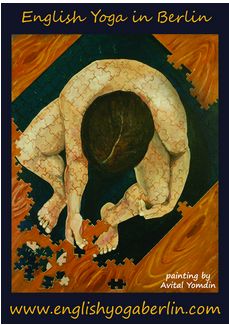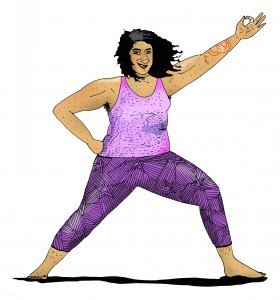
Practicing Breath
The idea of “practicing breath” is one that’s often heard in yoga classes. But what does it really mean?
Aren’t we always breathing?
In the novel Jitterbug Perfume, Tom Robbins writes about two characters, Alobar and Kudra, who learn techniques of immortality, one of them a slow, controlled breathing practice. I often think about them as I breathe the way I’ve learned through years of yoga practice. And no, I’m not doing it because I want to be immortal!
I started practicing yoga about 20 years ago. I’d follow along with the breathing techniques in classes, and feel their immediate effects; more openness in my body, a greater sense of calm, more energy, and sometimes just pure bliss. But I started to understand why they were so important only more recently as the practice became more a part of my daily life.
Breathing as Pain Alleviation
I’d struggled for years with pain from of endometriosis. And a few years ago I began a weekly practice of Osho Kundalini Meditation. Through this, I learned techniques of relaxation of the pelvic muscles, which helped to reduce the pain. As I would go through the exercises, I started to realize that it was my breathing that brought me to the relaxation. The deep yoga breath made me more conscious of where I was holding physical tension in my body and in invited me to release that tension. I don’t practice the Osho technique anymore, but as soon as I start feeling the pain from endometriosis, I take deep breaths and focus on relaxing my pelvic muscles. The pain quickly dissipates. I’m not saying that this could work for everyone, as not all pain is because of tension. But it works for me.
Breathing to Reduce Anxiety
Another thing that deep conscious breathing helps me with is anxiety. As an introvert, I feel the pressure of social anxiety in crowds of people. It’s easy to take a drink or too in social settings to numb that, and though I’m a yoga teacher, I’m not against that, as it does help me relax! But there are other situations where anxiety creeps up on me too. In these cases, a minute or two of deep controlled and conscious breathing help to me feel a bit more at ease. It’s not perfect, but that little bit does help me to function better.
Breathing as a Healing Practice
Over the past couple of years, I’ve been learning about restorative yoga and its healing potential. Allowing our bodies to rest through deep relaxation and conscious breath can support us in recovering from illnesses faster, reducing stress and anxiety, boost our immune systems and make us stronger. Last year, I began an advanced yoga teacher training, the Svastha Yoga Therapie program. What I’ve learned in the first couple of modules was invaluable. I’m excited for the 3rd and 4th modules which I will attend this year, which are all about the breath. I look forward to continuing to learn more about how the breath can heal.
Practicing Breath
The idea of practicing breath is not something unique to yoga, but it’s one that we focus on in yoga classes. Once or twice a week, we get together, breathe and move together. We learn various breathing techniques in a class lead by a knowledge guide. But then what happens when we leave? Do we go back to our short breaths, hunching shoulders up to ears while waiting for the bus in the cold? Holding our breath when someone makes us angry? My idea of practicing breath is about being conscious and aware of how I’m breathing in the moment. I try, when I can, to take this practice out of the yoga studio and into my daily life. It may not change the world and all society’s problems. But it can help me to deal with it better, and get strong to fight back against it in a way that is productive.
————————
Juli teaches restorative yoga and vinyasa flow at English Yoga Berlin in our Kreuzberg yoga studio.








